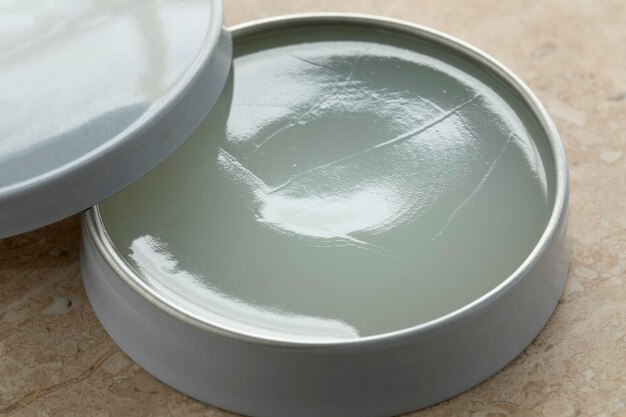
Description of Petroleum Jelly
Petroleum Jelly, a byproduct of crude oil, is a product made from Vaseline, paraffin oil, paraffin wax, lanolin, and vitamin E. The main ingredient in Vaseline is petroleum jelly, whic, a byproduct of crude oil, is a product made from petroleum jelly, paraffin oil, paraffin wax, lanolin, and vitamin E. The main ingredient in Vaseline is petroleum jelly, which is obtained through vacuum distillation and filtration through bone charcoal. The product is extracted and distributed throughout Africa. Chesbrough’s special recipe for producing petroleum jelly initially resulted in a semi-solid, transparent, and odorless product.
However, the production process has evolved over time, with the distillation and filtering process remaining relatively constant. Vaseline is the only petroleum jelly product with three stages of purification: distillation, deuteration, and filtration. These steps ensure the product is free of air bubbles and uniform, making it a valuable resource in the petroleum jelly industry.
Petroleum Jelly Production Process
The manufacturing process involves weighing ingredients, adding paraffin wax and micro crystalline wax to a reaction vessel, melting them with continuous stirring, and adding liquid paraffin. This mixture forms an emulsion or jel, which is then cooled and tested. The material is then packed in suitable containers.
The products must adhere to standards set by the Indian Pharmaceutical Code (IP), British Pharmacopoeia (BP), and other standards. The products are also regulated by the Food and Drugs Control Authority (FDCA) at both the Central and State levels. The Central Drugs Standard Control Organisation (CDSCO) is the apex organization, while the FDCA is the regulatory authority at the state level.
Uses
Petroleum jelly is a common, inexpensive product that can be used for multiple skin care purposes. It can be used to relieve dry skin, such as lips and eyelids, which can irritate easily.
For minor wounds, Vaseline can help keep the wound moist and prevent scab formation. It is not necessary to use anti-bacterial ointments as long as the wound is cleaned daily.
V can also prevent chafing, a painful skin irritation caused by body parts rubbing together or against clothing. Applying Vaselineto problem areas like the feet or thighs can prevent blisters.
To treat diaper rash, keep the baby’s skin as dry and clean as possible. If a rash does occur, apply petroleum jelly during each diaper change. If the rash doesn’t clear, consult a board-certified dermatologist.
For manicures and pedicures, apply Vaseline between polishes to minimize brittleness and prevent chipping. Applying petroleum jelly when the nails are damp is the best way to use it effectively.
By using petroleum jelly, you can save money on skin care without compromising on quality.
Industry Grade Petroleum Jelly Uses
- Application: Mainly used as flame retardants And Polyvinyl Chloride plasticizer,
- Low Volatility, Good Electrical Properties, Widely Used In Cable Material,
- Dress Up, Rolling Plates, Shoes and Other Products, Can Also Be Used For Rubber, and Madding Of Enamel
- With Chloride Adhesives, It Can Be Used As Fire Retardant Coating
We hope this article has answered all your questions about the properties of petroleum jelly. Contact us for more information.

